Shoulder problems are among the more common of GAA injuries with the reported incidence in the literature for shoulder injuries been approximately 17-19 % of all GAA injuries. injuries such as shoulder dislocations, AC joint sprains and shoulder impingement make up the majority of these injuries. Shoulder dislocations in particular can result in long periods of rehabilitation prior to returning to sport.
Due to the shoulders high degree of mobility and its reliance on muscular control, the shoulder has a high recurrence rate of dislocation. Athletes with a previous dislocation that is not surgically repaired risk a high likelihood of recurrence (up to 90%) on return to play. The younger you are, the more risk of recurrence in your athletic career. Whether surgery or conservative treatment is undertaken, the focus is on returning shoulder stability through active rehabilitation focusing on returning scapular and shoulder control. The role of the rotator cuff musculature is massive in this process and the need to address specifically the athletes deficits in control and strength is an important concept.
GAA athletes are particularly susceptible to attaining an injury due to the body contact involved, overhead activity and the risk of falling onto outstretched arms.
AC joint sprains are another source of missed time in sort. Contact is a common source of injury. Athletes can be left with a visible difference in their clavicle (collar bone) height following injury. This happens due to the ligamentous structures being more lax post injury. Returning to play too soon post injury can leave the athlete with a sore AC join that fails to resolve, impinging on performance, especially in contact and overhead.
Shoulder impingement provides a different problem to the athlete. It is often a gradual onset and is caused by imbalances of the muscles controlling the shoulder joint. In athletes, this imbalance can be caused by the larger anterior muscles (pectorals and deltoids) which produce force around the shoulder. These muscles are countered by the rotator cuff muscles which provide stability to the joint. When these muscles are under utilised, the mechanics of the ball and socket joint is upset leading to shoulder impingement .
For athletes, identifying deficits early and addressing muscular imbalance can help reduce the risk of injury and in sports that involve throwing or swinging, can improve athletic performance on the pitch, court or course.


